







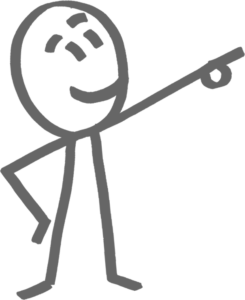
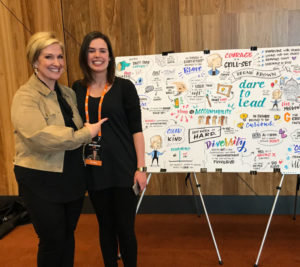
Graphic Recorder and Partner at Visual Friends
In this episode we are talking to a talented graphic scribe, an illustrator and visual facilitator Alice Edy about courage.
Alice dared greatly and ended up scribing for Brene Brown herself. She tells us how overcoming fear has helped her create important career opportunities for herself, shares her advice about preparing emotionally for a scribing session and gives us her tips about failing publicly and how you can’t grow creatively without making mistakes.
We loved talking to Alice about how stepping outside of the comfort zone allows you to direct and shape your career in an exciting and unique way.
Podcast notes: during our interview conversation Alice mentions Brene Brown, Heather Martinez, Kelvy Bird and Jessamy Gee.
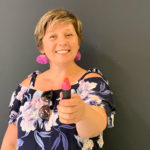
The article was written by Natalia Tsygankova. Natalia has always loved words and talking to people. She has put that passion to good use and has been sharing people’s stories in the community radio, TV and print media for the last 10 years. Natalia is also a big fan of true storytelling events and regularly volunteers at the most famous one – The Moth, interviewing the winner. You can hear her own story of moving to Australia from Russia in 1999 here. Natalia believes that everyone has a story – So what’s yours? Contact her today to share your story.


Graphic Recorder Strategic Visualiser, Award-winning Cartoonist, Writer and Animator.
I met Sarah Firth when I moved to Australia the second time in 2013. Sarah was for me THE graphic recorder, and I admired and still admire the great art she creates. Sarah is an award-winning comic artist, graphic recorder, writer and animator based in Melbourne.
In this fascinating episode of Visual Friends podcast, we learn about how she grew up in Canberra and later travelled the world. We hear about sketchnoting and how it helped Sarah focus at school. How she started her a career as an artist and how she got into graphic recording around 2010. She shares an incredible story about a major accident she’d been in and how sketchnoting helped her reconnect with her life while she was in the hospital.
Today, Sarah uses her skills in very challenging environments. She likes to work for non-for profit organisations, for example, helping people overcome trauma.
Sarah shares some tips about how you can improve your drawing skills over the years to become a rockstar in the field of graphic recording.
With that, please enjoy the episode and we look forward to welcoming you in person at VizConf on the 19th of October 2019 where we are privileged to have Sarah as one of our keynote speakers.
Sarah Firth is an award-winning comic artist and writer based in Melbourne. Since 2011, she has run a successful small business, offering graphic recording and facilitation, animation and event design. With the mission to help clients clarify, align, resolve, connect and communicate – through powerful visual modelling, storytelling and strategic mapping.
Sarah works across industries and sectors, with a particular interest in supporting clients navigating wicked problems, systemic change and high levels of complexity, environmental justice and social impact.
She has worked locally and internationally on projects and events with; Vienna Complexity Science Hub, Google, The Rockefeller Foundation, CSIRO, The Red Cross, Conservation Zoos Victoria, Melbourne Faculty of Business & Economics, Comedy Central, Environmental Justice Australia, SIEMENS, Vienna Complexity Science Hub, Not For Profit Law, ACMI, Aboriginal Victoria, KPMG, Pricewaterhouse Coopers, Planning Institute of Australia, Ernst & Young, City of Melbourne, Victorian Department of Premier and Cabinet, Oxfam, PLAN International and many more.
Alongside her business Sarah maintains a professional art and writing practice. Some notable achievements have been; receiving the Talking Difference Fellowship with the Immigration Museum, being named one of Australia’s top 25 artists by Art & Australia Magazine, winning The People’s Choice Award in the Australian Shorts section of the Human Rights Arts and Film Festival, performing at the Yogyakarta Biennale in Indonesia, the Lakes International Comic Festival in the UK, and the Ubud Writers and Readers Festival.
Most recently, she was appointed deputy chair on the board of directors for the Cultural Development Network, she received a Frankie Magazine Good Stuff Award, was a finalist in the Incinerator Social Change Art Award, and her graphic essay on complexity was listed in The Conversation’s ten best literary comics in Australia.
Sarah has a new illustrated book Badass Mums out now with Affirm Press, along with comics in upcoming publications with Allen & Unwin, Abrams Books and Picador Australia. She is currently working on her debut graphic novel thanks to the support of the Creators Fund.
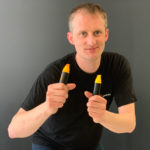
Marcel combines agile team coaching with visual thinking. Marcel believes that a group of people drawing together on a whiteboard can change the world. He loves high-performing teams and therefore coaches teams every day.


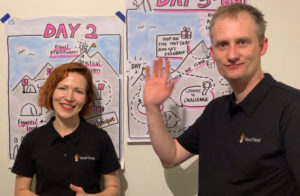
Visual Friends
An interview with Visual Friends co-founder, Marcel van Hove and one of our visual coaches, Yuliya Schamrel about a new and exciting program for our students – The 60 Days of Coaching. If you ever wanted to take visualisation skills to the next level, refresh your bikablo technique or develop a work-related visualisation project, this is for you. Hosted by Natalia Tsygankova.

The article was written by Natalia Tsygankova. Natalia has always loved words and talking to people. She has put that passion to good use and has been sharing people’s stories in the community radio, TV and print media for the last 10 years. Natalia is also a big fan of true storytelling events and regularly volunteers at the most famous one – The Moth, interviewing the winner. You can hear her own story of moving to Australia from Russia in 1999 here. Natalia believes that everyone has a story – So what’s yours? Contact her today to share your story.



Visual Thinker, Mum and Educational Manager
Melaine D’Cruze has been a visual thinker all her life. Through her school years and her career, she always took visual notes and doodled to focus and to remember ideas. She didn’t know that there was actually a professional field for visual thinking until one day when she discovered the TED Talk from Sunni Brown, Doodlers, unite!
Melaine read the book, subscribed to an online course from the Doodle Institute, read several books and through that became a very good sketch note taker. She even got invited by the Harvard Business School to publish a blog post after visualizing one of their online courses. However, her main application for visualization and visual thinking is not at work. Her main application is in the field of educating her kids.
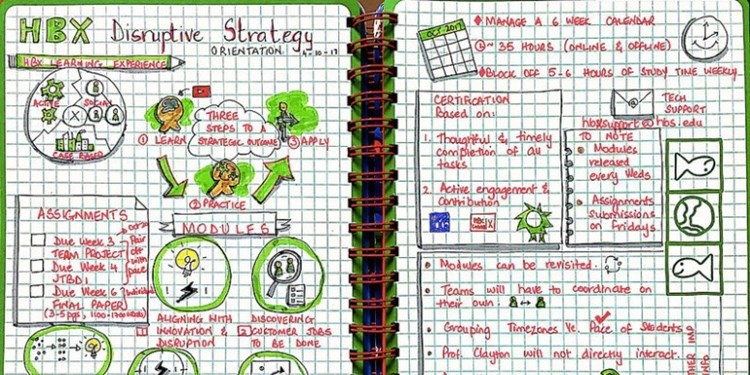
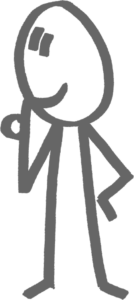
Visual Notes
Melaine D’Cruze
Melaine has two amazing boys, who are much faster understanding and accessing information when seeing them visually. She started to visualize ideas together with the boys and through that, they could memorize the content easily. The other boy stammered from time to time and with visual cue cards she could remind her boy to slow down whenever they stumbled. Today both boys are doing fine, and we’ll talk more about ideas on how we can educate kids visually.
In summary, this episode is a statement to believe in yourself, follow your passion and let no one take you down. I hope you enjoy this episode with Melaine D’Cruze from Karachi, Pakistan.

Marcel combines agile team coaching with visual thinking. Marcel believes that a group of people drawing together on a whiteboard can change the world. He loves high-performing teams and therefore coaches teams every day.


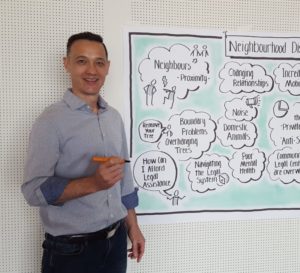
Trainer & Partner at Visual Friends
Let me introduce to you Danny Low. Danny is not only a bikablo® trainer and partner at the Visual Friends. He is also a very good friend of mine and in many ways, we are very similar. We talk a bit about that but we forgot to talk about one great story. So in the early days when I met Danny, he told me that he will take time off and travel with his family around the world.
He told me that he would like to pass on some of the experiences he and his wife Anna had and to show the kids the world. With that, we pretty much hit the core DNA of Danny. He likes to pass on his life experience to others – not only to his kids but also to his students at the Visual Friends. He likes to help others and is a great mate that everyone would like to have as a friend. We follow his personal journey, learn how to visualise legal contracts, hear about project management, agile coaching and how he became part of the Visual Friends. For me, Danny’s story is another great example of what can happen in life when you follow your passion and make a couple of choices at the right time. Please welcome our lawyer and Kung-Fu master Danny Low from Brisbane.

Marcel combines agile team coaching with visual thinking. Marcel believes that a group of people drawing together on a whiteboard can change the world. He loves high-performing teams and therefore coaches teams every day.


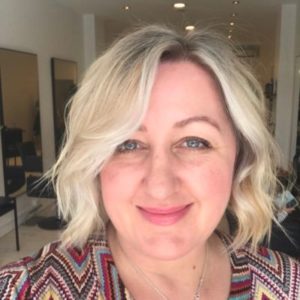
Agile Coach for AGL
I don’t know about you but I see many companies who put a lot of whiteboards inside their offices and I am not sure yet that they know how to make the best use of them.
Today’s guest is Christiane Anderson, she works as an Agile Coach for AGL. AGL is one of the major energy providers in Australia. AGL was founded in 1837 and was the company that lid the first gas lamp in Australia in 1841. Today they are listed as one of top 50 companies on the Australian Stock Exchange (ASX).
This episode is about Christiane’s journey from discovering the bikablo® drawing technique. We look at how she started small by showing the value of visual facilitation to AGL before it took off and inspired others through the whole organisation.
Additionally, we talk about visual facilitation in the context of an agile business transformation and what changes are needed in the human behaviours when working in an agile environment. We explore how agile coaching and life coaching can help each individual in the company to come along on an agile journey.
We provide you with a couple of tips about how you can light a fire of change and lead it in your organisation. This episode is about how you can start small and become bold.
I hope you enjoy this conversation with Christiane from AGL.

Marcel combines agile team coaching with visual thinking. Marcel believes that a group of people drawing together on a whiteboard can change the world. He loves high-performing teams and therefore coaches teams every day.



Head of Agile Transformation
I would like to ask you a question! Can you image you walk into a company and tell everyone to change the way they work? Maybe even question their values? Or find a new vision for what they would like to achieve? That is what an agile transformation often is about. Today I speak to David Landry. He works as a principal consultant at Elabor8 and he has facilitated an agile transition with his college Andrew Thorpe at a Melbourne University using the bikablo® drawing technique.
The way they have facilitated this agile transformation it is quite disruptive in itself. They have banned PowerPoint from the first day they arrived and introduced the bikablo® drawing technique using it instead of PowerPoint from the first meeting to all the team and project meetings.
He shares his experience with drawing live in front of other people. I hope you enjoy this conversation with David Landry from Elabor8.
You can’t draw or think that you can’t facilitate a meeting on a whiteboard yet? I would like to invite you to come to my next bikablo® visual facilitation training and learn the simple drawing technique that so far more than 1000 people worldwide have learnt.
Marcel: So welcome everybody. I’m here with David Landry from Elabor8. You are a principal consultant at Elabor8?
David: Yes, I’m a principal consultant at Elabor8. That’s correct.
Marcel: Let’s start with – What is Elabor8?
David: Elabor8 is a company that has been in business now for five years. It’s been steadily growing. Just recently, we opened up an office in Sydney. Elabor8 is a leader in agile development practices specializing very much around business analysis. We’re now taking a leading role in Agile Transformation and leading large organizations in their Agile Journey, like the one we’re going to talk about today. Their agile journey focuses initially on how they engage with business across all technology and other areas. So Agile Transformation has become a specialized area in Elabor8. We’re looking at the whole software development and how agile is used there. We want to connect business and technology groups together.
Marcel: And if I’m right, agile transformation means you take people on a journey to transform the way they work before and more engaged. What does an agile transformation mean in this context?
David: I think that’s a good question. Agile comes with a lot of baggage in many organizations today. Many organisations have a view that agile is just an adoption of a lot of ceremonies. We, Elabor8 take organisation through the underlying principles, if you like, the “science” behind the fundamentals of agile. So we look at Lean and Kanban. We look at particular methodologies, Scrum and the Scaled-agile frameworks and talk about what does that mean to the way your teams work, how do the various parts of the organization engage and most importantly, what’s the difference for leadership within those frameworks.
Marcel: And when we look at this university where you work now, I think, with a colleague together, what is his name?
David: Andrew Thorpe.
Marcel: Yeah.
David: He is acting as Scrum Master, Business Analyst and a mentor across the day-to-day working of the agile groups.
Marcel: So can you describe the scenario a bit? What are you doing here at this university?
David: So I’m going to take a step back and talk about how we got involved in the first instance: We were approached by a department within a university that has been trying to implement a new system for their operation and their engagement across the university. And it had been struggling over the last 12 to 18 months. We had a meeting with the senior directors and they decided to take an entirely different approach. So we introduced them into the “thinking” of taking an agile journey, but we didn’t really describe the Agile processes. We didn’t really get heavily into what that means, other than to say do you want to try something entirely different. Would you like a lot more transparency and openness and building a different communication? Of course, the answer is very simple, yes, yes and yes. So that’s set the context of how we started to work with the leadership and the teams. What was surprising is that while people were being taken out of their comfort zone, they were all equally ready for something different to take place. So we soften our conversation around agile practices and talked more about leadership and transparency. And this is where visualization stepped in.
Marcel: So how do you use now visual facilitation? I think Andrew came to my class maybe a half year ago. I think it was in July. Now it’s December and you were at my class in September. How does visual facilitation has now been playing in this agile transformation?
David: There were two things that we stipulated right from the beginning. The first was to get all the teams together into a combined planning session. Secondly, traditionally conversations with the team were based on PowerPoint presentations. So we decided that there would be no PowerPoints and that we would use Visual Facilitation. Our approach was that we prepared sheets with just simple words and diagrams drawn upon them and then during the facilitation, planning session we developed and captured further information during the facilitation. The key point that we were making is that the sheets were going to be long-lived and visible. That they are to be taken back to the workspaces and put up on the walls as a constant visual reminder.
Marcel: Yes, I have the same experience. I worked as an agile trainer and it felt for me wrong to talk about transparency and quick and easy way to work when not having such an easy simple way actually to create transparency. By creating flip charts on the wall where you have something explained, teams can actually own that and take it back to their team area. I think it makes absolute sense what you just said.
David: I had seen a traditional approach of implementing agile and a lot of it was training and talking about things and concepts and those typical the things that you do in Scrum. And what we really wanted to focus was more to take a journey of transparency and collaboration and building a vision.
We weren’t as confident in the drawing and to do it dynamically, so we focused on drawing simple banners and headings, borders, using just two colours. We establish sheets for the vision and the “Why”. Previously there wasn’t a common understanding of the vision. There wasn’t something binding people (team) together as to why this project was important and how it was going to help the university.
Marcel: If I get you right had like a “half prepared flipchart sheets” with you and then you take the people on a journey with drawing live. Was this the way you did it?
David: Correct. Also, for instance, when the program director presented the vision we had spare sheets to capture group discussion points. These were added to the vision.
Marcel: Yes.
David: Interestingly, for the Vision sheets used later sessions with the extended business owners and actually drilling into benefits for the university. The revised sheets were taken by an Graphic Artist who created a series of more formal version of these drawings.
Marcel: I didn’t catch what they did. Did they take pictures?
David: So basically, they created graphics from all these drawings and stylize the graphics. I’m sure, Marcel, if you could have been there you would have been able to draw a better piece.
Marcel: No, I wouldn’t have done a better one.
David: But they were then able to focused very much on just some program icons.
Marcel: If I get it right, they took snapshots of parts of your drawings and then use them as a key visual in their PowerPoint presentation?
David: Not in PowerPoint.
Marcel: All right. Okay.
David: They produced A1 sheets.
Marcel: Nice!
David: These Graphic Sheet are used in community showcases. A lot of it is that you are able to visualize and be able to have a conversation with a group of people about vision, outcome and what this will do for the university that will enable further development of that vision and actually fine tune the messaging, not only for the teams, but for many other stakeholders and the wider community.
Marcel: For me what I experienced in the past when I had prepared slide decks and used them, they become like a power tool because you basically put people in front of a very solid plan even if it’s maybe your best guess. But it looks like this is what we do. Instead when you draw on paper just by the different technology, just by having this very soft approach people have the feeling that you take them more on a journey, even if the same background maybe you spend weeks preparing it both, right? But it becomes often for me something that makes it easier to take people on the journey. So you have any experience around this?
David: Absolutely. Last Friday we ran another planning session for another sub-part of the overall program. We had about 30 people in the room. The agenda sheet, which was prepared, was placed around the room along with other sheets with the headings of Risks, Plan Objectives, goals, etc
Marcel: Yeah.
David: So the engagement was a lot stronger. Again all the sheets were taken back to their work. They’re reminders of the collaboration, the planning, the votes of confidence and the agreement that the team did together. The information on these sheets covered a number of areas of technology, configuration, environments, etc. Some of the discussion got quite technical, but this gave the business stakeholders an appreciation of what’s required to deliver a working software. So the respect and understanding of what everybody has to do is now recorded in all the various sheets. All brought together, at the end of the day, with a common set of objectives and goals for the team, for the next period of time. We are only planning on a short time horizon of about six weeks. It is just way too much to try and do any more than that.
Marcel: I try something that is maybe too farfetched but for what had happened for me was when you do an agile transformation a lot of marketing is involved by sharing the ideas about the new mindset, new processes, new tools that you use. It’s a bit like an advertisement. You basically the poster and take it back to your place, right? So it reminds you of this change.
David: Well, it becomes very powerful because then when you start to break out into the small sessions to do feature story planning for the next couple of sprints, there is an understanding of the deliverables.
Marcel: Yeah.
David: The problem is most people had a good understanding of Agile and a lot of the leadership thought they had a good understanding of agile. But as I said right at the outset, they saw it more as a bunch of ceremonies that their teams would use to deliver something useful. The second area I think we brought to overall facilitation was that we’re able to get a lot more concurrency of doing business process design, data transformation, the configuration of systems, and development of systems and the integration of systems in common cadence and common sprints. Having business processes change alongside system development and configuration being implemented is a way to bring users and all stakeholders into the program. For me, another powerful aspect of the visualisation is when we had other managers from other departments visit the project they were lead along the journey. They would start with the vision, then the objectives before moving to the Kanban walls.
Marcel: Yeah.
David: And they were able to explain to those people the whole context and where the program is at. So they we able to use the visualization of the objectives, ideas and concepts.
Marcel: Nice.
All right you used visual facilitation at the university. But what hasn’t worked? Where does this live drawing reach the limit?
David: It’s very hard you answer that question because for me I see nothing but up at the moment because this is the first time that I’ve used it. So I actually don’t see many negatives. Traditionally to engage large groups with different stakeholders that normally do not worked together, we would run a well prepared session with a number of PowerPoints. Capture information from the discussion and send that back as a report. In effect the intent of the meeting is some-what lost or at least diminished.
I would have liked to add more drawings. We found that when we are rushed we revert back to writing words or one or two words and we’re not quite segmenting it and creating boxes and those sort of things. I think that we’ve got to get discipline and practice around using some icons and drawings. So we have made some commitment to do this, we’ve got the (bikablo icon) cards and we’ll start looking at using them as aids to a lot more stronger visualization.
Marcel: Bigger metaphors?
David: Yeah. I think we’re falling back to the habits of just writing sentences and words and dot points but all being just sticking up around the wall.
Marcel: But on there, don’t take it too hard. You put words on a picture and map this out, it’s already a drawing for our eyes. So even if there are no key visuals in it I think it’s already a change. By spacing out the page and, yeah, makes sense.
David: Yeah. I think we can get a lot better. So you just don’t have the same banner headings especially when you are developing the program principles, objectives and goals.
Marcel: So you’re referring to something we do in the training which is like the level of certainty and we have like guess bubbles, speech bubble, where you have a goal post and —
David: Yeah, that’s exactly right.
Marcel: — when you are certain of your answers or you have an agreement.
David: Yeah. So we are hanging the project off these principles and —
Marcel: Yeah. That makes sense.
David: — and we found that that was a lot better. The other thing too I’ll have to say from our perspective and Andrew is not here, it’s a lot more enjoyable to you as a presenter and a facilitator. It gives you a different dimension of how to engage the audience. One of the things I think that worked really well last Friday was to keep people time boxed. So you’ve written some stuff up there and then you start to close out the session by putting borders around the drawings and moving on because you’re not adding much more value to the conversation.
Marcel: Yeah.
David: Another thing I would add, it would have been hard to do the facilitation if you were the only one in the room and doing the writing.
Marcel: Highly recommend to do that together.
David: With the two of us we were taking turns to who was writing. The other one would have to slow the group down and make certain you got the key points. And so you need a fair amount of discipline and to make certain that the group own the words that have been written on the various sheets.
Marcel: So last question. Where from here? If you look for this university what do you think would be their next step or what do you think your next step is with visual facilitation?
David: It’s a good question. I think there is sort of two parts to that question. One. what does it mean to Elabor8?
Marcel: Yeah.
David: I think it’s a major ingredient used for all executive-type engagements as we’ll actually do far less preparing of PowerPoints and packs. We may have only one pack where we’re going to talk about some repetitive stuff or references. So we use the visualization to draw the engagement out. The second thing is if we’re being true to the agile principles is that we want the teams to own this visualization themselves and we’ve been encouraging this as we hand the control back to the various scrum masters and other people who are wanting to take on mentor roles. We’re advising them that they should be doing this sort of visual facilitation course as well. So it isn’t just left with a consultant firm who came in and did some nice drawing around the wall, did some different type of the facilitation. We leave the skill set with them.
Marcel: You actually empower them to do it themselves.
David: So we’ve been discussing that and we have been talking about using visual facilitation in some of the showcases where there’s a larger audience and that there should be some sort of “chalk and talk” element that’s quite dynamic in the presentations. So I think we’re going to make certain that they adopt the skill and they own the outcome.
Marcel: All right. David, thank you very much for your time and thanks for sharing this story with this university and yeah, let’s see where we go, 2016.
David: Yes.
Marcel: Thanks.

Marcel combines agile team coaching with visual thinking. Marcel believes that a group of people drawing together on a whiteboard can change the world. He loves high-performing teams and therefore coaches teams every day.


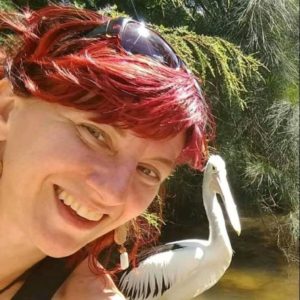
Business Analyst at MYOB
In this episode Nicole Brand shares her story how she became a visual leader: I had the fortune to work with Nicole Brand for the last 18 month on a daily bases. I saw her progressing from not feeling confident enough to participate in meetings to the point where people follow Nicole’s lead into any meeting room and come along on her visual journeys. I have never seen a steeper learning curve in terms of visual leadership than Nicoles before – I hope the podcast inspires you as much as Nicole inspired me!
Nicole: For me, the biggest tip is, don’t be afraid to not know everything and pass the pen on to someone else who knows more.
Marcel: Welcome everybody to the bikablo® radio, the Visual Facilitation Podcast. With me here today in Melbourne is Nicole Brand. Welcome, Nicole.
Nicole: Hi, everyone. Thank you, Marcel.
Marcel: Nicole is working as a product owner in a company called MYOB. Tell us a bit about who you are, where you come from, what you do?
Nicole: Yes, sure. I’ve been living in Melbourne for the last 20 years. Absolutely love it. It is my new home. I live with a couple of cats. I could be a crazy cat lady in the making.
Marcel: Great.
Nicole: When I’m not at home with my cats then I’m out practising yoga and learning how to be a yoga teacher which is also really exciting and if you can’t tell I do like trying to keep myself busy and doing 101 different things. I also work at MYOB as a product owner. I have been with the MYOB for the last 13 years. So I’ve actually been able to work in a number of different roles over the last six or seven years.
Marcel: You came to bikablo® visual facilitation drawing class 11 months ago.
Nicole: Yes.
Marcel: When you look before that time, how was your way of working differently?
Nicole: Yeah, sure. Really, really different. Within MYOB I’ve had a number of different roles, but at all times I’ve always had to collaborate and work with people. Interestingly, I never really felt equipped or I had the tools or the resources to really facilitate a good meeting and drive to the outcomes. Back then it was quite common to have meetings that didn’t really end with a solution or a resolution or with the outcome that we’re looking for which is perpetuating itself into more meetings.
I also didn’t necessarily have the confidence as well to actually facilitate and to drive things to the right outcomes because I didn’t really feel like I necessarily have the tools. I actually had just a life of meetings.
Marcel: A life of meetings, yes. They don’t always come to an outcome and you felt like you don’t have the right tools to drive those meetings.
Nicole: Yeah, absolutely. Sometimes we would actually have people in the room who would be able to drive things to the right outcomes, but it was not something that I necessarily felt empowered to do or that I felt confident in doing. I mean, to grab a pen and walk up to a whiteboard. No, thank you. That was definitely not my mode of operation. Especially not with the sort of other stakeholders and management there. Yeah, definitely not.
Marcel: Then you came then to the training last October and you went to quite a journey with me, you’ll agree. We started the fundamentals class in October and then you came to the practitioner class. Then you actually gave me a hand another day with co-facilitating right and so you have done all the classes and so how has this played out for you? How’s the last journey of the last year?
Nicole: First of all, my confidence has increased dramatically over the last year. So much so that I’ve actually had colleagues walk up to me and tell me how they see me as being a completely different person to what they saw a couple of years ago.
Marcel: What is different about you?
Nicole: It’s being confident and being able to distil conversations down to an essence and being able to visualize that on a whiteboard and being able to take everyone on that journey. There’s nothing more powerful than actually taking a pen to a whiteboard engaging everyone in the room so that they’re all looking at you. Well, actually that’s the best part. They are not looking at you. They’re looking at the whiteboard which is also really nice. You don’t necessarily have all of the eyes on you.
Marcel: It’s not so confronting anymore.
Nicole: Yes.
Marcel: You now have the tool to break through and get the people on to a collaborative whiteboard drawing situation which is much more your playground.
Nicole: Exactly. Yes.
Marcel: Great. Give us an insight into how the day looks like now in your role. If I’m right, you work as a product owner now at MYOB for a team and how does a day look like for you now?
Nicole: Now I will have meetings, but definitely nowhere near as many. I mean ideally, everyone wants zero meetings but, yeah, that’s a perfect world, ideal thing. Now my meetings are actually reduced to half an hour. I do not book meetings longer than 30 minutes which is really quite exciting. Everyone walks in with a clear understanding after I’m able to basically take them through what it is they’re looking or we’re looking to talk about.
By the end, we’ve got clear action points, a clear understanding of who’s actually going to walk away with different pieces of work and it’s all done before people get an email. It’s all done in a way where people get buy-in into what it is that they are supposed to be doing. Probably one of the things that I’ve never really liked is walking into a meeting and then you have a conversation and you walk out, and an hour later the meeting notes come through and you’ve got things against your name and either (a) they don’t look like what you originally discussed or (b) you didn’t even know your name was there.
It’s just really nice to be able to walk away with that so that everyone has that clear understanding of what needs to happen next.
Marcel: That means in half an hour you fill a small piece of paper or you fill a wall or what?
Nicole: Thankfully, in the office in most of the meeting rooms we actually have two whiteboards. So more often then not I’ll usually have one or both whiteboards full.
Marcel: After half an hour, right. This is like two and a half square meters of space.
Nicole: Yeah. Two whiteboards might be if it goes longer than half an hour.
Marcel: Do you replace meeting minutes?
Nicole: The pictures are the meeting minutes.
Marcel: All right.
Nicole: Yeah.
Marcel: Okay. Cool.
Nicole: It’s really nice because I usually have someone who’s part of the meeting take a picture of it so that they can also take ownership of it and pass it around to everyone who attended in the meeting. We can then put that up on different wiki pages that we have as well so we can use that for future reference. It’s really quite useful and it’s quite easy to put yourself back into that conversation when you look back at it.
Marcel: Nicole, what was the first role at MYOB?
Nicole: Helpdesk.
Marcel: Helpdesk?
Nicole: Yes.
Marcel: Then you move to be a business analyst, senior business analyst and then now a product owner in MYOB. There are folks out there who are on a similar journey. What is the one tip you would like to share with the world when people facilitate meetings or bring people together to collaborate?
Nicole: Yes, sure. Probably one of the key things is you don’t need to have all the answers. You don’t need to know all of the answers when you’re facilitating. You don’t need to know where you’re going on the journey. You don’t even need to know how to communicate things visually on a whiteboard. Because at the end of the day you’re the person standing up there in front of the whiteboard. You’ve got the pen in your head and whoever has that pen has the attention of people and there’s nothing more powerful than to actually empower someone else to be able to share the message and to communicate and be part of that collaboration picture. For me, the biggest tip is, don’t be afraid to not know everything and pass the pen on to someone else who knows more.
Marcel: I like that. Pass the pen on.
Nicole: Yeah.
Marcel: Great. All right. If you’re interested, guys out there, to learn more about check out the bikablo® academy website. It will be in the show note. There are training coming in Sydney and Melbourne. Find them in to show note and thank you for listening. Thank you, Nicole, for attending. Do you have anything you want to share before we wrap up?
Nicole: Have fun.
Marcel: Yay!
Nicole: Visualising is so much fun. I used to absolutely visualise everything that I do more often than not because it’s so much easier to do and it’s so much fun. There’s no boundaries to it, absolutely no boundaries. So put any on there and just enjoy it for what it is.
Marcel: Cool. Thank you very much and have a great weekend, Nicole.
Nicole: Thank you, Marcel.
Marcel: All right.
Nicole: Thank you, everyone.

Marcel combines agile team coaching with visual thinking. Marcel believes that a group of people drawing together on a whiteboard can change the world. He loves high-performing teams and therefore coaches teams every day.

